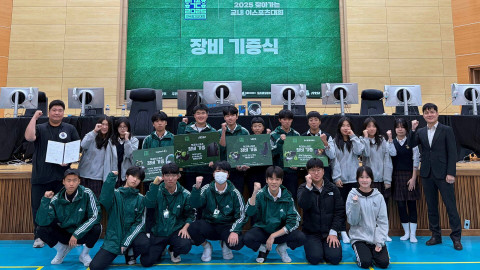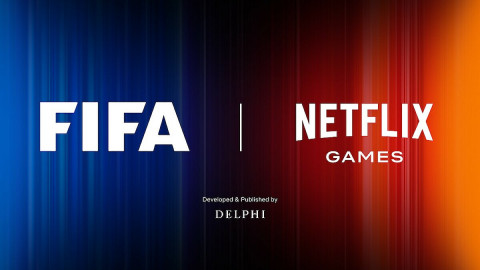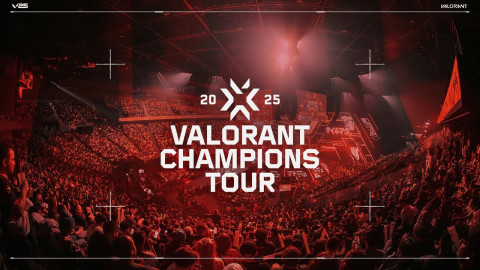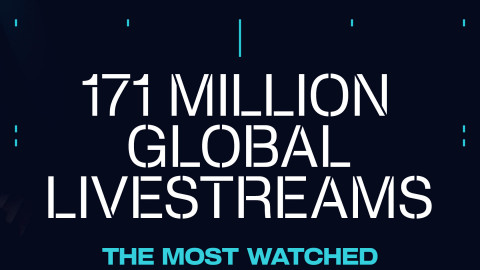
Practically overnight, via the commencement of the Overwatch League, over 100 pro gamers became the faces of multiple massive marketing campaigns; the figurative (and sometimes literal) product being sold by over a dozen different parties, each with their own interests, tactics, and end game. Their social media followings sky-rocketed and they soon found themselves on the receiving end of deafening cheers and unbridled enthusiasm. In short, they became instant celebrities.
For many, the popularity and attention was expected, but the influx of “stans” was startling. Derived from both the portmanteau of stalker-fan and a 2000 Eminem song about an unstable fan who kills himself and others after the rapper fails to respond to his fanmail, the term is now how extreme fans, typically of a singular person, self-identify.
Stans are the most obsessive, most infatuated, and most die-hard of a celebrity’s audience, and the sub-culture has become notorious for inappropriate behavior, from stalking to harassment and abuse. In a community as relatively intimate as the League’s, disconcerting fan behavior is not easily disguised by the masses, and as player accessibility and fan interaction hits an all time high, it also cannot go unacknowledged.

One player, after blocking a fan on Twitter, quickly found himself inundated with pleas from said fan and her friends to have her unblocked -- it must be a mistake, they insisted, and couldn’t he just unblock her? “This is a f**king nightmare,” she tweeted; a friend asked for retweets to raise awareness of the situation and quickly shot down anyone who questioned their reaction. A lengthy message expressed the fan’s confusion, apologies, and unadulterated love and affection.
Some players received sexually explicit comments and others became the subject of sexually explicit fan-made content, while others still were contacted by strangers with unprompted tales of their mental illness or requests for help with various problems as a way of initiating private conversations. If left unanswered, fans’ messages occasionally turned belligerent or manipulative.
On his birthday, another player became the subject of countless Twitter and Instagram posts. “I love you, I f**king love you,” began the impassioned caption of one of many photo collages of his face, most of the images pulled from screencaps of YouTube videos. Fans described him as precious and special, called him a “baby boi,” insisted he needed to be protected, and more in a similar vein.
Public and private confessions of love were the norm, as were collages and slideshows of his face. One fan gushed about how honored she was to have developed a relationship with him throughout the season, but when asked, he said they had only met for a brief moment at an event.
"...the League’s audience is expanding and its players have garnered
enough recognition to put them on the receiving end of unhealthy,
obsessive, and potentially dangerous fan behaviors,"
Players’ girlfriends who made their relationships public were targeted with harassment or treated with disdain in certain communities, and at least one spouse deliberately hid her involvement to avoid attention from her boyfriend’s increasingly zealous fanbase.
Another player described how earnestly a fan had attempted to get close to him throughout the season, enlisting her friends to pester not only him, but also his friends and teammates, for a meeting outside of games and events. The messages, which can only be described as manipulative, painted the fan as shy, vulnerable, his biggest fan, and in need of a friend. The pleas carried on for months. Later, when he found out she was one of several fans who photographed themselves in his team’s neighborhood, he began to avoid crowds after matches.

In esports, obsessive, inappropriate fan behavior is normalized and unquestioned. It is too often justified as a byproduct of Internet fame or otherwise readily dismissed by cultural expectation -- that is, the expectation that esports pros should accept and perhaps even welcome stans because the unbridled infatuation of strangers means that they have “made it.”
Teams are off-handedly likened to boy bands, and players are casually compared to KPOP stars and professional athletes, and these erroneous equivalences convince bystanders and even players that unhealthy behavior is the norm. But in reality, Saebyeolbe is not Lebron James; Jake is not Drake; and, the distinction between Overwatch League celebrity and mainstream celebrity is of paramount importance.
Above all else, pro players lack the safety of inaccessibility. While stan culture may present as more extreme or prevalent in the cases of mainstream celebrities, those celebrities are decidedly out of reach of their audiences. They live in gated communities, have bodyguards on staff, and are unlikely to interact with fans on Twitter, much less come into contact with them in person.
Pro Overwatch players, of course, are not nearly as famous as the aforementioned names, but the League’s audience is expanding and its players have garnered enough recognition to put them on the receiving end of unhealthy, obsessive, and potentially dangerous fan behaviors. And importantly, they lack the necessary separation from their growing fanbases to prevent those behaviors from manifesting offline.
"Accessibility is expected in esports, argued as deeply ingrained in the culture, but it is
merely a reflection of the magnitude of esports communities,"
Esports organizations actively work to erode the barrier between fans and players, encouraging complete transparency and constant interaction via streaming, behind-the-scenes content, social media usage, and free (or cheap) fan events. Want to snag a quick pic with your favorite player? No problem -- just wait outside the Blizzard Arena after a match! Some players will even tell you to message them directly on Twitter or Discord to arrange a meeting.
Need a question answered? You don’t have to wait for a Vogue photoshoot to be released or a new episode of Fallon to come out; every team has a Discord channel for that and the League offers an AMA after every match. Between social media and the relative intimacy of both the Blizzard Arena and teams’ local events, it is unprecedentedly easy for fans to interact with their idols.

Although not ill-intentioned, the double whammy of constant exposure via content and accessibility via events fosters the misconception that fans, especially those whom are prone to obsession, actually know or are friendly with the objects of their affections. Most often, the opposite could not be more true. Community sanctioning of fanfiction only adds fuel to the fire, reducing players to mere characters or ideas rather than complex people.
Of course, fabricated familiarity is the goal; it creates dedicated fans and boosts jersey sales. It is not accidental, nor inherently bad, but it does breed a level of delusion that can turn dangerous when left unchecked. Accessibility is expected in esports, argued as deeply ingrained in the culture, but it is merely a reflection of the magnitude of esports communities. The Overwatch League aims to expand that magnitude and as it does, standards for pro player safety and ease of access must adapt to a growing audience and habitual offline interaction.
Disconcerting declarations of love; inappropriate message spam to one’s friends and coworkers; blatant delusions of a non-existent relationship; even death threats and harassment -- all are frequently ignored, written off as a byproduct of Internet fame, because they exist online. But increasingly, teams are taking the show on the road.

During the break between Stages 2 and 3, the Houston Outlaws and the New York Excelsior both held meet-and-greets in their respective hometowns. Neither hired security, even following the slew of death threats Outlaws player Austin “Muma” Wilmot received earlier in the season. In Texas, the Outlaws found themselves signing autographs for over two hours longer than planned and when they left, were mobbed by fans on the way to their tour bus.
In New York City, a fan in attendance said that the hotel hosting the event had building security, but that they were only concerned with not surpassing capacity. At similar events hosted by a variety of League teams throughout the season, fans and players described security as “kind of a joke” or otherwise non-existent.
Additionally, throughout the league’s inaugural season, three teams occupied the same apartment complex, the location of which did not remain secret for long. Common knowledge of the league’s general area, combined with constant content creation and careless mentions on social media, meant that anyone who went looking could find it. Some fans did just that.
"Unhealthy fan behaviors go unquestioned by players, player management, and the
community because online obsession is deemed harmless and even flattering,"
At present, especially as the League settles into its off-season, concerns regarding player safety and privacy may seem unfounded, but again, the esport’s audience is growing; inappropriate behavior goes unquestioned; and, one need only look at the fanbases of other e-famous personalities to see where the scene could be headed.
In late 2017, a fan drove over 11 hours to the home of popular YouTubers Gavin Free and Meg Turney, then broke in with the intent of murdering the former. Similarly, in 2016, the home of YouTube news reporter Philip DeFranco was broken into and as recently as 2018, he mentioned having hired security to monitor his offices on various occasions.
Swatting is all too common -- and deadly -- in the gaming community, and a variety of streamers and YouTubers, including Sodapoppin, PewDiePie, and Deji, to name a few, have had fans discern their locations and show up at their doors.

At BlizzCon, a fan found his way into the backstage area of a World of Warcraft arena event and came into contact with competitors, and another fan received the home address of a pro player and began to send him unsolicited mail. Once the player failed to acknowledge the fan’s gifts and ceased contact with her for violating his privacy, she became hostile.
Just this weekend, Hearthstone streamer and YouTuber “DisguisedToast” discovered multiple Discord servers which fans were using to stalk him and his partner “xChocoBars,” who is also a Twitch streamer. “They updated our every move,” wrote xChocoBars. “Anytime I went into any channel. Anytime I liked a tweet. They even tracked my family’s Twitch activities.” The pair has reached out to Discord, Twitch, and the police regarding the situation.
“Overwatch League player” is not synonymous with streamer or YouTuber or online personality, but pro players produce similar content and possess a similar type of fame -- just with the added bonus of being wholly accessible not only online, but offline as well. Frankly, if the majority of the League’s players were female and their stans male, then there would be no question as to whether or not certain fan behaviors were appropriate or security necessary.
"...the expectation that players tolerate the unhealthy, invasive infatuations of
stans must adapt to a growing audience,"
But that is not the case. Unhealthy fan behaviors go unquestioned by players, player management, and the community because online obsession is deemed harmless and even flattering. It is to be expected, and those who find the actions of stalker-fans inappropriate would never dream of discussing their discomfort publicly for fear of biting the hand that feeds, of alienating the audience that keeps them relevant.
This standard must change. The conflation of fandom with obsession, stalking, and harassment must stop. The expectation of accessibility and transparency, as well as the expectation that players tolerate the unhealthy, invasive infatuations of stans, must adapt to a growing audience.
Next year, the Overwatch League will include 20 teams and house at least 160 players, but likely more than 200. Its audience will expand, its players’ fandoms will grow, and more and more fan events will be held. When they are, security must be present, and within the community, both fans and players must continually question whether the fan behaviors that have been normalized by online interaction are, at the end of the day, safe and healthy.
Sort by:
Comments :1
-
0

level 1 fedaykin
It's like nobody learned anything about the beatles. ffs what a useless article.






